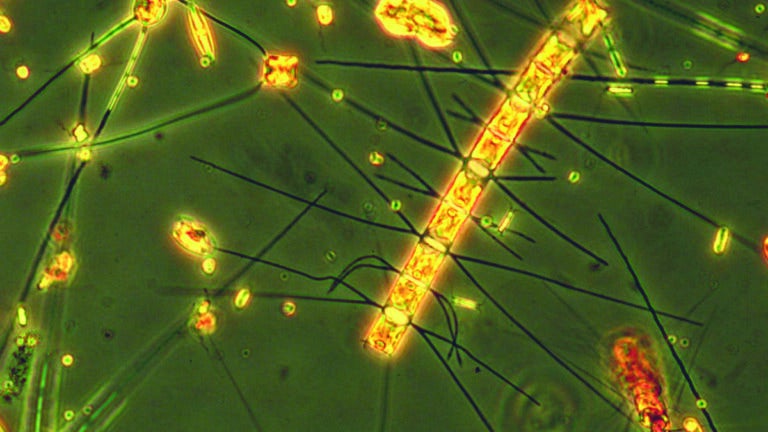
How will billions of microbes at the base of the food chain adapt to warming oceans?
Climate change is heating the oceans, which affects billions of marine microbes in ways scientists don’t fully understand. In response, researchers at USC Dornsife College of Letters, Arts and Sciences have developed a model to forecast how these important organisms will adapt to warming seas.
Sea-going microorganisms are responsible for producing half of the oxygen humans breathe. The oceans also sequester vast amounts of carbon dioxide from the atmosphere. Fisheries, supported by marine microorganisms, feed millions worldwide.
In many ways, what Earth will look like in 50 to 100 years depends on how these tiny creatures respond to a changing climate.
“The oceans are changing,” said Naomi Levine, assistant professor of biological sciences and Earth sciences at USC Dornsife, “but we don’t know what future ocean ecosystems will look like because we don’t know how these organisms will respond to changes.”

Naomi Levine. (Photo: Alex Herrera.)
Levine’s team — in collaboration with scientists at the University of Edinburgh and the National Oceanic and Atmospheric Administration (NOAA) — developed a predictive model to estimate how those microbes will adapt. The model provides a simple framework researchers can use to understand the adaptation of different types of microorganisms to numerous variables. And it is freely available to other scientists around the world.
Using the model, Levine and colleagues discovered marine microbes responded in two ways. Some microbes changed easily. Suited for success in the short run, they thrived with little preparation for the future. Meanwhile, competitors — pushed to the margins for a spell — evolved to position for rapid proliferation over the long run once temperatures stabilized at a higher level.
“It’s like a tortoise and hare comparison, two different strategies to finishing the race,” said Levine, who is senior author of the study, published in Proceedings of the Natural Academy of Sciences.
In addition, the study results provide valuable information to include in other models of global carbon cycles now being used to forecast climate change.
See USC News for more on the story >>
About the study
Other study authors include postdoctoral researchers Nathan Walworth and Emily Zakem of USC Dornsife; John Dunne of NOAA’s Geophysical Fluid Dynamics Laboratory; and Sinead Collins of the University of Edinburgh.
This work was supported by grants from the Simons Foundation (#509727 and #542389), the Moore Foundation (#7397), the National Science Foundation (#1538525), NOAA’s Office of Oceanic and Atmospheric Research, and a Royal Society University Research Fellowship.